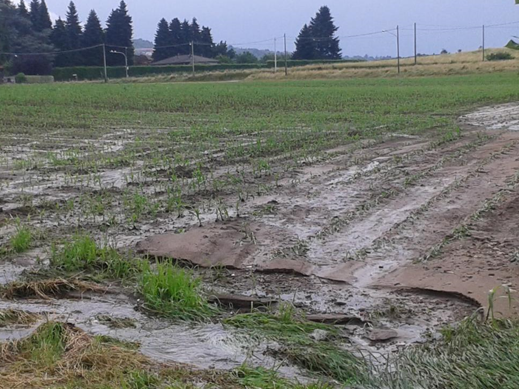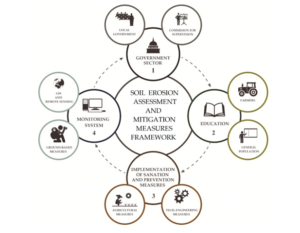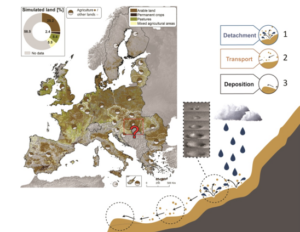Climate Change, Soil Erosion, and the Green Deal Agenda: Paving the Path to a Sustainable Future amidst a Looming Environmental Crisis
Tin Lukić (UNSPMF team) – 26th of July 2023

Climate change and soil erosion are two pressing environmental issues that are intricately linked and pose significant challenges to our planet’s health. As climate change alters weather patterns and intensifies extreme events, it exacerbates soil erosion, leading to severe consequences for ecosystems, food production, water resources, and human societies. Recognizing the urgent need for action, the Green Deal Agenda has emerged as a comprehensive and ambitious strategy to tackle these interconnected issues. By aligning climate change mitigation, soil conservation, and sustainable practices, the Green Deal Agenda offers a pathway to a more sustainable and resilient future. The GreenScent project aims to achieve these goals through interdisciplinary and inter-institutional cooperation. Some of our recent work for the Western Balkans region can be checked at: https://www.mdpi.com/2073-4433/14/1/104
The Interplay of Climate Change and Soil Erosion:
Climate change brings about shifts in temperature, precipitation, and weather patterns worldwide. These changes, in turn, impact the processes that drive soil erosion. Intense rainfall events associated with climate change can dislodge soil particles and wash them away, degrading soil quality and fertility. Simultaneously, prolonged droughts and rising temperatures increase the vulnerability of soil to erosion by drying it out and depleting vegetation cover.
Causes and Consequences:
Soil erosion has several underlying causes, including deforestation, overgrazing, unsustainable agricultural practices, and unchecked construction activities. These human-driven factors disrupt the delicate balance of ecosystems and accelerate soil loss. The consequences of soil erosion are far-reaching. Fertile topsoil, rich in essential nutrients, is lost, leading to decreased agricultural productivity and food security. Additionally, eroded soil sediment pollutes water bodies, affects aquatic ecosystems, exacerbates flooding risks, and hampers groundwater recharge.

Mitigating the Risks:
Addressing the intertwined challenges of climate change and soil erosion requires collaborative and concerted efforts on various fronts. As pointed out by Micić et al. (2023) a few key strategies are highlighted to mitigate this looming environmental crisis:
a) Sustainable Land Management: Implementing sustainable land management practices, such as afforestation, reforestation, and agroforestry, can enhance vegetation cover, stabilize soils, and reduce erosion risks.
b) Climate-Smart Agriculture: Promoting climate-smart agricultural techniques, such as conservation tillage, crop rotation, and integrated pest management, can improve soil health, increase water retention capacity, and enhance resilience against climate impacts.
c) Erosion Control Measures: Adopting erosion control measures, including terracing, contour plowing, and use of vegetative barriers, helps to minimize the erosion of soil by wind and water.
d) Raising Awareness and Education: Educating communities, farmers, and policymakers about the importance of soil conservation, sustainable land management practices, and climate change adaptation is vital to drive positive change and inspire action.
e) Policy and Governance: Implementing robust policies and regulations to ensure responsible land use, conservation practices, and sustainable development is essential for long-term environmental sustainability.

Therefore, climate change and soil erosion pose immense challenges, but they also present opportunities for transformative change. By addressing both issues hand in hand, through sustainable land management practices, climate-smart agriculture and education, erosion control measures, and informed policy decisions, we can mitigate the crisis in Europe. The Green Deal Agenda based projects such as the H2020 GreenScent, serves as a visionary roadmap, integrating climate change mitigation, soil conservation, and sustainable practices. By aligning our efforts, we can pave the path to a sustainable EU future, where thriving ecosystems, food security, and resilient communities coexist.
